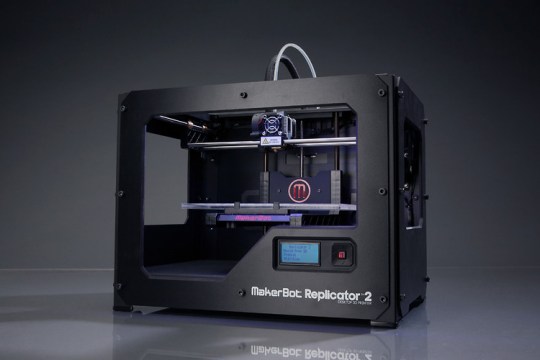Think of the human body; a spontaneous, unexpected blow to the head
can kill an otherwise healthy creature; all the healthy cells and tissue in the
legs, arms, torso and so forth killed through dependency on the brain’s
functionality. Interdependent systems are only ever as strong as their weakest
critical link, and very often a critical link can fail through nothing more
than bad luck.
Yet
the human body does not exist in isolation. Humans as a species are a
decentralised network. Each individual may be in himself or herself a fragile,
interdependent system, but the wider network of humanity is a robust
independent system. One group of humans may die in an avalanche or drown at
sea, but their death does not affect the survival of the wider population. The
human genome has survived plagues, volcanoes, hurricanes, asteroid impacts and
so on through its decentralisation.
In
economics, such principles are also applicable. Modern, high-technology
civilisation is very centralised and homogenised. Prices and availability are
affected by events half way around the world; a war in the middle east, the
closure of the Suez Canal or Strait of Hormuz, an earthquake in China, flooding
in Thailand, or a tidal wave in Indonesia all have ramifications to global
markets, simply because of the interconnectedness of globalisation. The
computer I am typing this into is a complex mixture — the cumulative
culmination of millions of hours of work, as well as resources and
manufacturing processes across the globe. It incorporates tellurium, indium,
cobalt, gallium, and manganese mined in Africa. Neodymium mined in China.
Plastics forged out of Saudi Crude. Bauxite mined in Brazil. Memory
manufactured in Korea, semiconductors forged in Germany, glass made in the
United States. And gallons and gallons of oil to ship all the resources and
components around the world, ’til they are finally assembled in China, and
shipped once again around the world to the consumer. And that manufacturing
process stands upon the shoulders of centuries of scientific research, and
years of product development, testing, and marketing. It is a huge mesh of
interdependent processes. And the disruption of any one of these processes can
mean disruption for the system as a whole. The fragility of interconnection is
the great hidden danger underlying our modern economic and technological
paradigms.
And
even if the risks of global trade disruptions do not materialise in the
near-term, as the finite supply of oil dwindles in coming years, the costs of
constantly shipping so much around and around the world may prove unsustainable.
It
is my view that the reality of costlier oil is set over the coming years to
spur a new industrial revolution — a very welcome side-effect of which will be
increased social and industrial decentralisation. Looming on the horizon
are technologies which can decentralise the means of production and the
means of energy generation.
3D
printers — machines that can assemble molecules into larger pre-designed
objects are pioneering a whole new way of making things. This could well
rewrite the rules of manufacturing in much the same way as the rise of personal
computing discombobulated the traditional world of computing.
3D
printers have existed in large-scale industry for years. But at a cost of
$100,000 to $1m, few individuals could ever afford one.
Fortunately, improved technology and lowered costs are making such
machines more viable for home use. Industrial 3D printers now cost from
just $15,000, and home versions for little more than $1,000. Obviously,
there are still significant hurdles. 3D printing is still a relatively crude
technology, so far incapable of producing complex finished goods. And molecular
assembly still requires resources to run on — at least until the technology of
molecular disassembly becomes viable, allowing for 3D printers to run on, for
example, waste. But the potential for more and more individuals to gain
the capacity to manufacture at home — thereby reducing dependency on oil and
the global trade grid — is a huge incentive to further development. The next
Apple or Microsoft could well be the company that develops and brings
home-based 3D printing to the wider marketplace by making it simple and
accessible and cheap.
Decentralised
manufacturing goes hand-in-hand with decentralised energy generation, because
manufacturing requires energy input. Microgrids are localised groupings of
energy generation that can vary from city-size
to individual-size. The latter is gradually becoming more and more economically
viable as the costs of solar panels, wind turbines (etc) for energy generation,
and lithium and graphene batteries (etc) for home energy storage fall, and
efficiencies rise. Although generally connected to a larger national
electricity grid, the connection can be disconnected, and a microgrid can
function autonomously if the national grid were to fail (for example) as a
result of natural disaster or war.
Having
access to a robust and independent energy supply and home-manufacturing facilities
would be very empowering for individuals and local communities and allow a
higher degree of independence from governments and corporations.
Home-based microgrids can allow the autonomous and decentralised powering
and recharging of not just home appliances like cooking equipment, computers,
3D printers, lights, and food growing equipment, but also electric vehicles and
mobile communications equipment. Home-based 3D printing can allow for
autonomous and decentralised design and manufacturing of useful tools and
equipment.
The
choice that we face as individuals and organisations is whether or not we
choose to continue to live with the costs and risks of the modern globalised
mode of production, or whether we decide to invest in insulating ourselves from
some of the dangers. The more individuals and organisations that invest in
these technologies that allow us to create robust decentralised energy
generation and production systems, the more costs should fall.
Decentralisation
has allowed our species to survive and flourish through millions of years of
turbulent and unpredictable history. I believe that decentralisation can allow
our young civilisation to survive and flourish in the same manner.

No comments:
Post a Comment